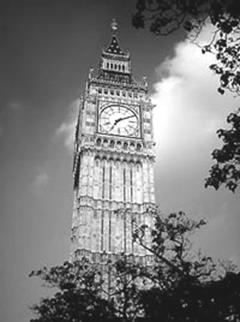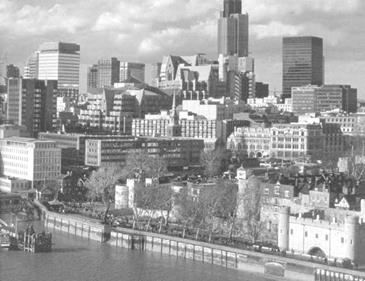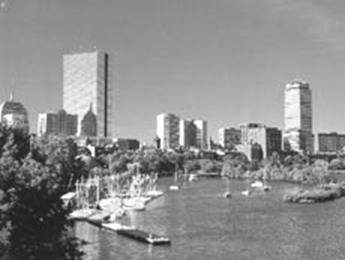From the History of London
The name London is thought to have come from the Latin name Londinium, as London was founded by the Romans during their reign over the land, around 43AD – although there is some slight evidence of pre-Roman settlement. This fortified Roman settlement was the capital of the province of Britannia. Another suggestion for where the name of the city comes from could be that of the mythical leader, King Lud. It was said that Lud laid out the first set of roads in the city. His statue can be seen hidden at the church of St Dunstan’s In The West, Fleet Street.
Around AD 61 the Iceni tribe of Celts lead by Queen Boudicca stormed London and took the city from the Romans. The Celts burnt the relatively new Roman town to the ground, and archaeological digs have revealed a layer of red ash beneath the City of London, which is believed to be the burnt remains of the old Roman town. After the fall of the Roman Empire, Londinium was abandoned and a Saxon town named Lundenwic was established approximately one mile to the west in what is now Aldwich, in the 7th century. The old Roman city was then reoccupied during the late-9th or early-10th century.
 Westminster was once a distinct town, and has been the seat of the English royal court and government since the medieval era. Eventually, Westminster and London grew together and formed the basis of London, becoming England’s largest – though not capital – city (Winchester was the capital city of England until the 12th century). London has grown steadily over centuries, surrounding and making suburbs of neighbouring villages and towns, farmland, countryside, meadows and woodlands, spreading in every direction. From the 16th to the early-20th century, London flourished as the capital of the British Empire.
Westminster was once a distinct town, and has been the seat of the English royal court and government since the medieval era. Eventually, Westminster and London grew together and formed the basis of London, becoming England’s largest – though not capital – city (Winchester was the capital city of England until the 12th century). London has grown steadily over centuries, surrounding and making suburbs of neighbouring villages and towns, farmland, countryside, meadows and woodlands, spreading in every direction. From the 16th to the early-20th century, London flourished as the capital of the British Empire.
In 1666, the Great Fire of London swept through and destroyed a large part of the City of London. Rebuilding took over 10 years, but London's growth accelerated in the 18th century and, by the early-19th century, it was the largest city in the world.
Text 15
Districts of London
The City of London is the principal financial district of the United Kingdom, and is one of the most important in the world. It is governed by the Corporation of London, an ancient body headed by the Lord Mayor of London. The City also has its own police force, the City of London police. The City has only a small resident population (about 7,000), but a daytime working population of more than 300,000. Its primacy as the chief financial district has been directly challenged in recent years by Canary Wharf in East London.
 The West End is the most popular shopping and entertainment district in London. Trafalgar Square is the most prominent landmark. Oxford Street is one of the best-known shopping streets in the world. Running from Charing Cross Road in the east to Marble Arch in the west, via Oxford Circus where it crosses Regent Street, it is home to many large department stores and shops. Tottenham Court Road runs north from the eastern end of Oxford Street towards the north of the city centre, and is best known for its plethora of hi-fi, computer and electronics stores. West of the City, Covent Garden is home to the Avenue of Stars, London’s version of Hollywood’s Walk of Fame. Piccadilly is an elegant thoroughfare running from Piccadilly Circus in the east to Hyde Park Corner in the west. It is adjacent to Mayfair, and Green Park. Regent Street and Bond Street are important thoroughfares.
The West End is the most popular shopping and entertainment district in London. Trafalgar Square is the most prominent landmark. Oxford Street is one of the best-known shopping streets in the world. Running from Charing Cross Road in the east to Marble Arch in the west, via Oxford Circus where it crosses Regent Street, it is home to many large department stores and shops. Tottenham Court Road runs north from the eastern end of Oxford Street towards the north of the city centre, and is best known for its plethora of hi-fi, computer and electronics stores. West of the City, Covent Garden is home to the Avenue of Stars, London’s version of Hollywood’s Walk of Fame. Piccadilly is an elegant thoroughfare running from Piccadilly Circus in the east to Hyde Park Corner in the west. It is adjacent to Mayfair, and Green Park. Regent Street and Bond Street are important thoroughfares.
 The East End of London is closest to the original Port of London, and tended for that reason to be the area of the city where immigrants arriving into the port would settle first. The East End extends from the eastern side of the City of London. The area has many places of interest including many of London’s markets, and several museums, including the Geffrye Museum and the Museum of Childhood. London Docklands, on the Isle of Dogs along the Thames in the East End, has developed enormously since the early-1980s.
The East End of London is closest to the original Port of London, and tended for that reason to be the area of the city where immigrants arriving into the port would settle first. The East End extends from the eastern side of the City of London. The area has many places of interest including many of London’s markets, and several museums, including the Geffrye Museum and the Museum of Childhood. London Docklands, on the Isle of Dogs along the Thames in the East End, has developed enormously since the early-1980s.
For a period in the early-1980s, many warehouse buildings in Wapping had been occupied and used as artists’ studios and low-cost loft living spaces. This inevitably drew the attention of property developers who gradually moved in to take over. The London Docklands Development Corporation (LDDC) was set up in 1981 to accelerate the process, and the first phases of major development started to reshape the area, culminating in Canary Wharf, whose best-known feature is the 1 Canada Square office tower, which has been the UK's tallest skyscraper since 1991. A massive-scale development within the last three or four years has added a great many more skyscrapers, and many large businesses (investment banks, law firms, etc.) have moved in. Attracted by this growth, restaurants, bars and nightclubs have opened, there are three interconnected shopping malls beneath the Canary Wharf structure, and a cinema complex has opened in the area.
Text 16
